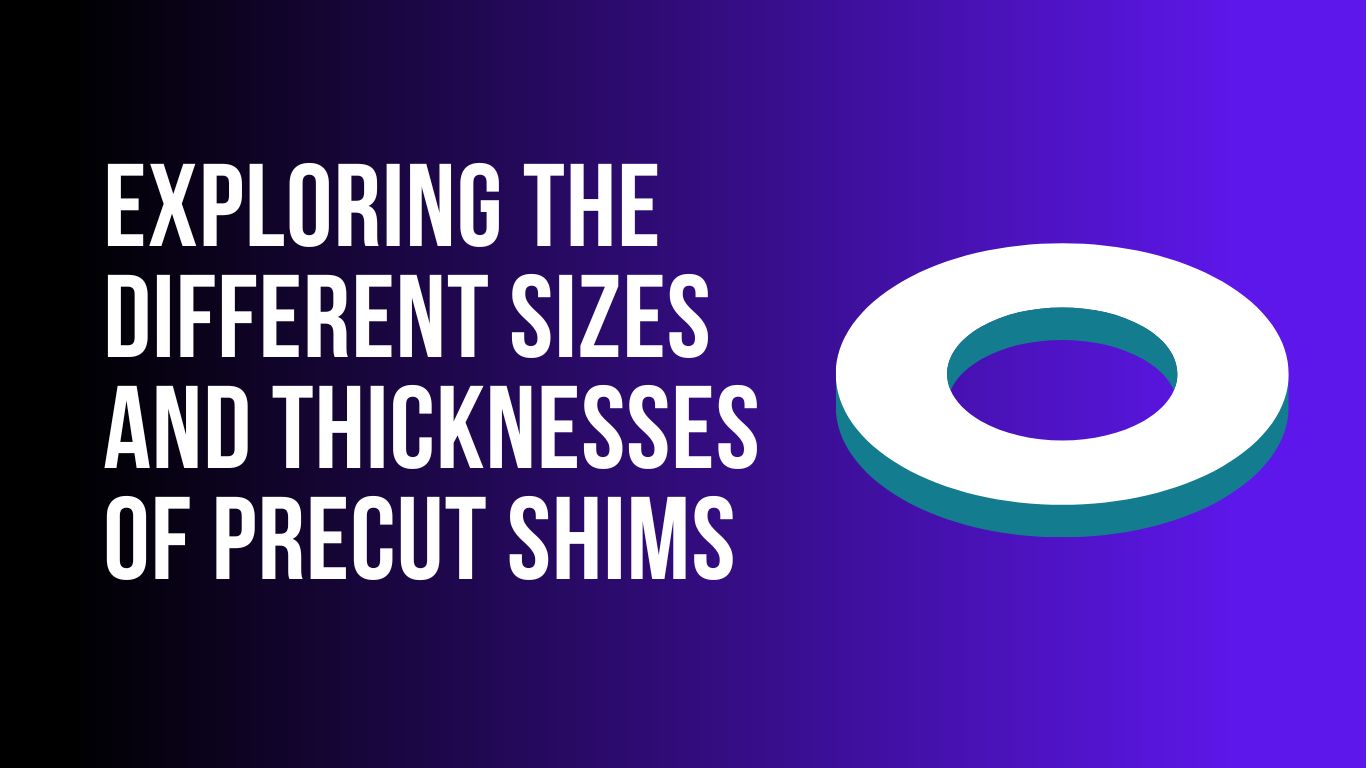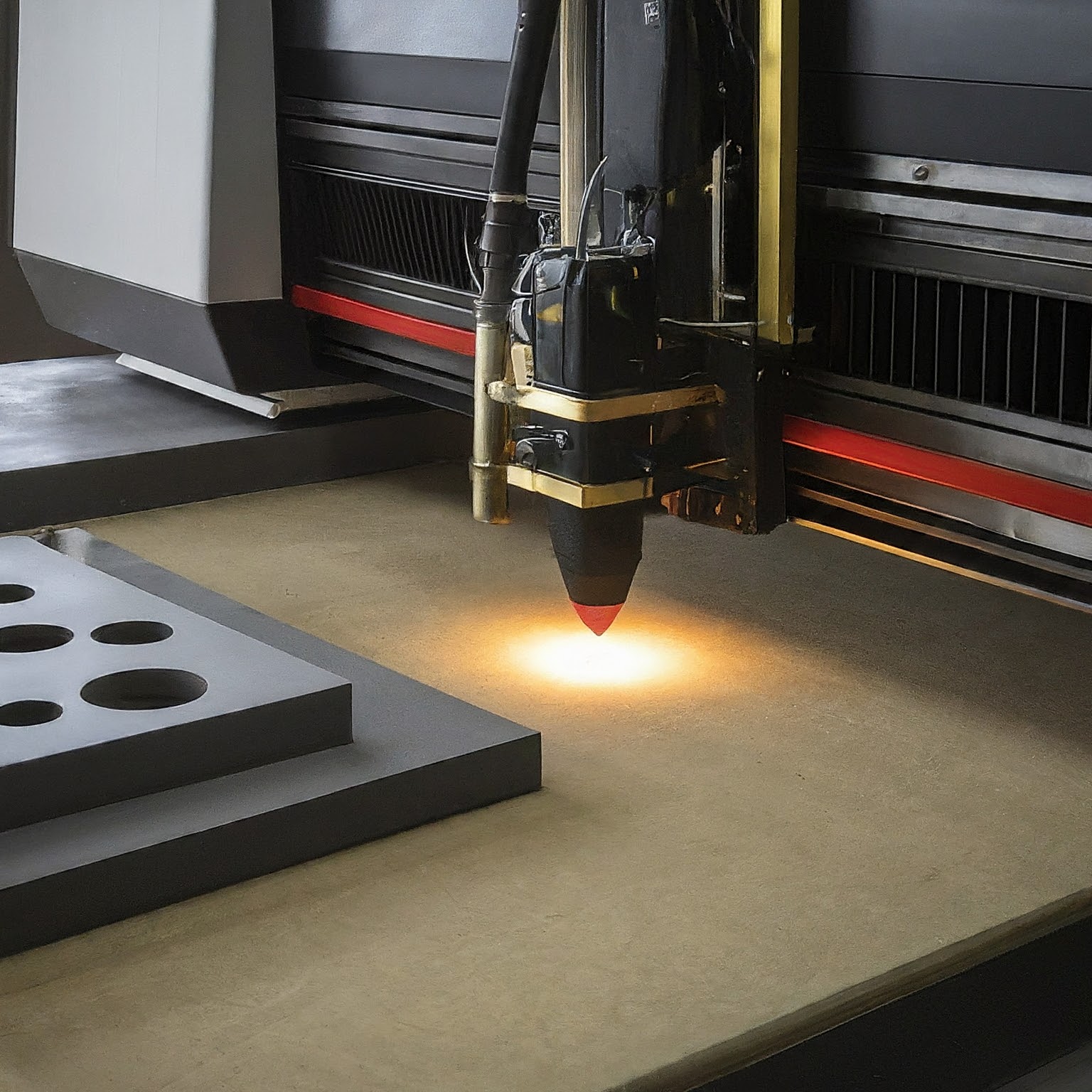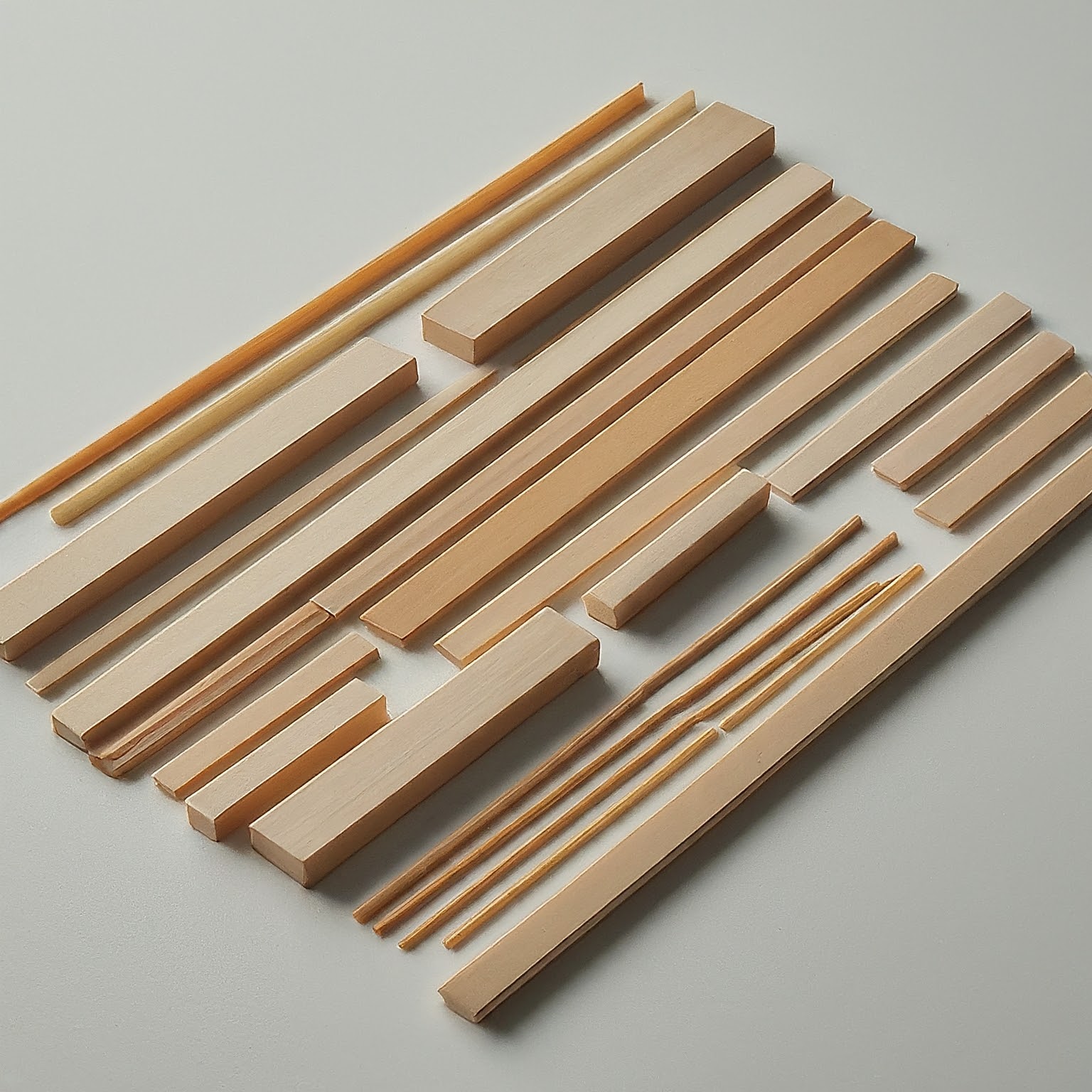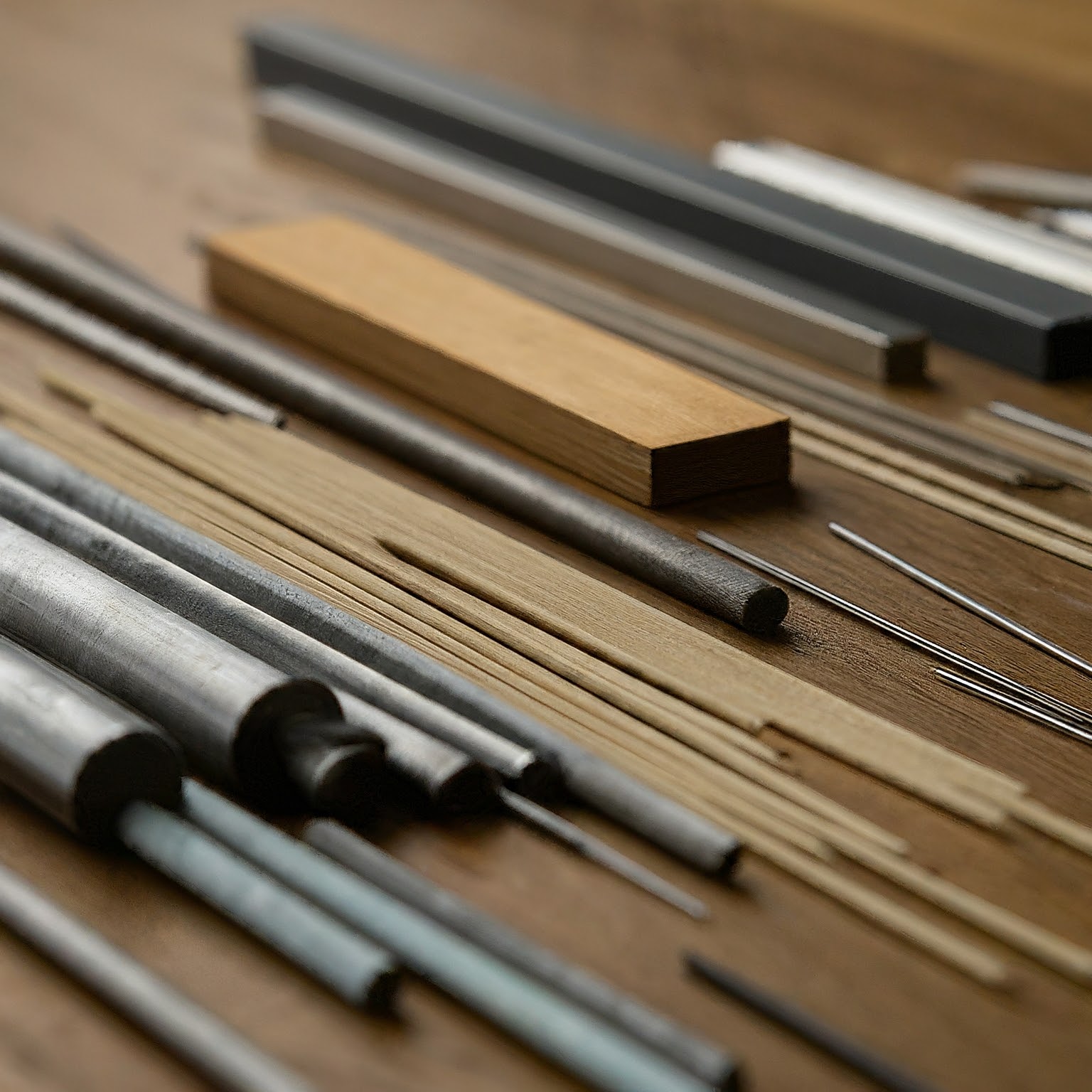Exploring the Different Sizes and Thicknesses of Precut Shims

When it comes to precision and alignment in mechanical and construction projects, precut shims are a game-changer. But with so many different sizes and thicknesses available, how do you choose the right one for your needs? Whether you're a seasoned professional or just getting started, understanding the variety of precut shims available can save you time, money, and frustration. In this guide, I'll walk you through everything you need to know about the different sizes and thicknesses of precut shims, so you can make the best choice for your project.
Table of Contents:
- What Are Precut Shims?
- Why Size and Thickness Matter
- Common Sizes of Precut Shims
- Popular Thicknesses of Precut Shims
- How to Choose the Right Size and Thickness
- Applications of Various Sizes and Thicknesses
- Benefits of Using Precut Shims
- Conclusion
What Are Precut Shims?
precut shim are thin, flat pieces of material, typically metal, that are pre-manufactured to specific dimensions and ready for immediate use. Unlike custom shims that require on-site cutting, precut shim are designed for convenience and precision, ensuring that you can quickly and easily fill gaps, level components, or adjust alignments in various applications.
Key Features of Precut Shims:
- Precision: Manufactured to exact dimensions, providing consistent results.
- Material Options: Available in various materials, including stainless steel, brass, and aluminum.
- Ease of Use: Ready to use right out of the package, saving time on the job.
Why Size and Thickness Matter
You might be wondering, why should I care so much about the size and thickness of a precut shim? The answer is simple: precision. The wrong size or thickness can lead to misalignment, increased wear and tear, or even mechanical failure. Choosing the correct size and thickness ensures that your components fit together perfectly, reducing the risk of issues down the road.
Key Considerations:
- Size: Determines the area coverage and fit.
- Thickness: Affects the gap-filling capability and structural integrity.
- Material: Influences durability and compatibility with other components.

Common Sizes of Precut Shims
precut shim come in a wide range of sizes to suit different applications. The size of a shim sheet is typically determined by the dimensions of the gap or space that needs to be filled. Here are some of the most common sizes:
- Small Precut Shims (1-2 inches):
- Best For: Small-scale projects, such as aligning small machinery parts or adjusting door frames.
- Example: Fine adjustments in HVAC systems or precision alignment in electronics.
- Medium Precut Shims (3-5 inches):
- Best For: General-purpose use in mechanical installations, such as leveling heavy equipment or aligning conveyor systems.
- Example: Machinery installations or automotive applications.
- Large Precut Shims (6-12 inches):
- Best For: Industrial applications where large gaps need to be filled, such as in construction or structural engineering.
- Example: Structural alignment in construction or heavy-duty machinery setups.
- Custom Sizes:
- Best For: Unique projects that require non-standard dimensions. Although these are not typically "precut," they can be ordered to precise specifications.
Popular Thicknesses of Precut Shims
Just as important as the size of the shim sheet is its thickness. The thickness of a precut shim determines how much space it can fill and how it will interact with other components. Here are some popular thicknesses and their common uses:
- Thin Precut Shims (0.001 - 0.010 inches):
- Best For: Precision applications where only minor adjustments are needed.
- Example: Fine-tuning machinery or leveling sensitive equipment.
- Medium Precut Shims (0.010 - 0.050 inches):
- Best For: Standard alignment tasks where moderate adjustments are required.
- Example: Leveling machine bases or adjusting the height of conveyor belts..
- Thick Precut Shims (0.050 - 0.250 inches):
- Best For: Heavy-duty applications where significant gaps need to be filled.
- Example: Structural alignment in construction or heavy machinery.
- Extra-Thick Precut Shims (0.250 inches and above):
- Best For: Extremely large gaps or when additional structural support is needed.
- Example: Industrial applications like bridge construction or large-scale manufacturing.

How to Choose the Right Size and Thickness
Choosing the right size and thickness of a precut shim can feel overwhelming, but it doesn’t have to be. Here's a simple process to guide you:
- Measure the Gap:
- Start by accurately measuring the gap or space that needs to be filled. Use calipers or a thickness gauge for precise measurements.
- Consider the Load:
- Think about the weight and pressure that will be applied to the shim. Thicker shims are better for heavy loads, while thinner shims work well for lighter applications.
- Evaluate the Material:
- The material of the shim plays a crucial role in its performance. Stainless steel shim is great for corrosion resistance, while brass offers excellent malleability.
- Select the Right Size:
- Choose a shim size that fits the area you’re working with. Ensure it covers the entire gap without overlapping or leaving any part unsupported.
- Choose the Thickness:
- Based on your measurements and load requirements, select a shim thickness that will fill the gap perfectly.
Applications of Various Sizes and Thicknesses
The size and thickness of a precut shim determine its suitability for different applications. Here’s a look at how various shims are used across industries:
- Automotive Industry:
- Small, Thin Shims: Used for precision alignment in engines and transmissions.
- Medium, Medium Shims: Employed in the suspension system for leveling and alignment.
- Construction:
- Large, Thick Shims: Essential for structural alignment, such as in bridge construction or large building projects.
- Medium, Medium Shims: Used in leveling beams and columns.
- Manufacturing:
- Medium, Thin Shims: Ideal for adjusting conveyor belts or machinery components.
- Small, Thick Shims: Used in precision manufacturing to maintain tight tolerances.
- Aerospace:
- Small, Thin Shims: Used in aircraft assembly for fine adjustments and alignments.
- Medium, Medium Shims: Employed in the landing gear or other critical components where precision is vital.

Benefits of Using Precut Shims
precut shim offer several benefits that make them a preferred choice in many industries:
- Time-Saving:
- precut shim are ready to use, eliminating the need for on-site cutting and reducing downtime.
- Consistency:
- Manufactured to precise specifications, precut shim offer consistent quality and performance, ensuring uniform results across projects.
- Versatility:
- Available in various sizes, thicknesses, and materials, precut shim can be used in a wide range of applications, from automotive to construction.
- Cost-Effective:
- By reducing the need for custom fabrication and minimizing waste, precut shim can save you money in the long run.
- Precision:
- The accuracy of precut shim ensures that your components fit together perfectly, reducing wear and tear and extending the life of your equipment.
Conclusion
Understanding the different sizes and thicknesses of precut shim is crucial for selecting the right one for your project. Whether you're aligning machinery, leveling a structure, or fine-tuning a precision component, choosing the right precut shim can make all the difference.
Take your time to measure the gap accurately, consider the load requirements, and select a shim sheet that meets your specific needs. With the right precut shim, you can achieve a precise fit, improve the longevity of your equipment, and ensure the success of your project.
About Sachin Shim
Our range of shims includes metal, machine, industrial, precision, adjustable, machinery, engineering, custom, and alignment shims. These shims are designed for various applications, such as machinery alignment, fine adjustments in industrial-grade machines, engineering projects requiring steel shims, heavy-duty machinery requiring versatile metal shims, aerospace applications demanding precision stainless steel shims, automotive use requiring adjustable aluminum shims, precision engineering projects using high-quality brass shims, construction applications requiring durable plastic shims, specialized machinery needing customized shim solutions, and manufacturing processes requiring fine-tuning shims for precise alignment and accurate machine setup and leveling.
Author
Meet Sachin, our expert author in industrial materials with a deep understanding of brass shim sheets. With years of experience, Sachin brings valuable insights and expertise to this guide, making him a trusted source for all things related to brass shim sheets. Join us as we delve into the art of crafting brass shim sheets with Sachin leading the way.
List Other similar blogs







